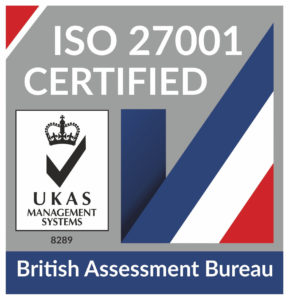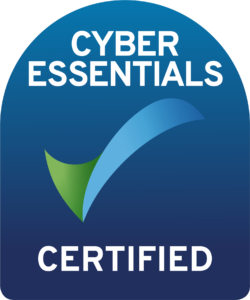
HaloITSM Guides
Documentation to assist with the setup and configuration of the HaloITSM platform
SCOM Integration
In this guide we will cover:
- Enabling the Integration
- SCOM Configuration
- Halo Configuration
- Resolving Alerts in SCOM
Related Guides:
Enabling the Integration
To enable the SCOM integration, navigate to Configuration > Integrations > Asset Management and Alerting, and enable the module using the plus icon in the top right hand corner of the menu icon. Once the module has been enabled, click the menu icon to begin configuring it.
SCOM Configuration
For the integration to function successfully, your SCOM alert templates must be altered. On the message template, add the following line of text to the top of template body:
Alert ID: {$Data/Context/DataItem/AlertId$}
Adding this allows Halo to store the ID of alerts against any tickets that are raised via an alert email from SCOM. Secondly, if you are using the SCCM integration to import your assets and would like to link tickets created via alerts to their corresponding assets, add the following line of text to your template under the above line:
Device Name: {$Data/Context/DataItem/ManagedEntityDisplayName$}
Halo uses the SCOM API to resolve alerts automatically when their linked ticket is resolved. This functionality uses NTLM authentication, which should already be enabled on your SCOM server.
To confirm this, open IIS, select your web server node and click into authentication. Ensure that Windows Authentication is enabled, then right click Windows Authentication and select providers. If NTLM is not in the list of available providers, then add it from the list of available providers.
Fig 1. List of providers.
Halo Configuration
When opening the module, the first set of instructions briefly cover modifying your SCOM alert templates as mentioned in the previous section. Below this, you will see three configuration options.
Fig 2. Setup.
The first option is the from address, which should be the email address from which alerts will be sent from SCOM to Halo.
The second option allows you to choose which ticket type alerts from SCOM should be created as.
The third option is used for asset matching. If you have modified your SCOM template to include the device name, then you should choose which asset field stores this value for your assets in Halo. This allows Halo to link the correct asset to a ticket when created via an alert received from SCOM.
By modifying these fields, an email rule has been created for you to help capture and process the alerts from SCOM. If you would like to view the rule in more detail, then this can be done by navigating to Configuration > Email > Email Rules.
Resolving Alerts in SCOM
To automatically resolve alerts in SCOM, the Halo integrator must be run from a location that can access the SCOM API. It is recommended to deploy this on the SCOM server itself.
To authenticate with the SCOM API, the Halo integrator requires your server name, domain, and a windows username and password. This user must have access to SCOM, and have the ability to resolve alerts manually in the SCOM application. Populate the four available fields in the Halo UI to complete this configuration step.
Fig 3. SCOM connection.
Underneath these fields, you can download the Halo Integrator and enable it for the SCOM integration. Once downloaded and enabled, open the Halo Integrator and open the SCOM integration tab. To ensure that your configuration is correct, run the configuration check that is available on the tab. If all configuration checks in the list return a green tick, then you are ready to begin running the Halo integrator to close SCOM alerts automatically.
Resolving on versions v2.196+
Halo Integrator
From v2.196+ you will have a choice of integrators that can be used to schedule this import, allowing you to choose between using the Halo integrator application (hosted by you) or the Halo DB integrator (hosted by you). The primary difference between these choices is how your password will be exposed. The Halo integrator application will access your Halo database, including obtaining your password, through the API, which means the password for the integration will need to be accessible via the API. Whereas the Halo DB integrator has the Halo API built into it and connects directly to your database. For more information on the Halo integrator application and the Halo DB integrator check out Halo DB integrator.
Your choice of integrator will impact how the password used for the integration is exposed, whether it is accessible via the API or not, but this will also be determined by your chosen password storage method.
Fig 4. Integrator selection
When the 'Halo Integrator' is selected you will still be able to use a Halo DB integrator to schedule imports in addition to this integrator. However, if you have selected 'Halo DB integrator', the Halo integrator will not be able to run for this integration.
Note: On premise customers will not be able to use the Halo Integrator.
Recommended:
We recommend using the Halo DB integrator to schedule imports for SCOM as currently passwords can only be stored in Halo, therefore if using the Halo integrator this will be accessible via the API.
If you have multiple Halo integrator applications you may wish to restrict which of these have access to this integration. By default all client IDs will be able to access on-premise integrations, however, this can be disabled, allowing you to whitelist which client IDs can access the integration.
To do this head to configuration > advanced settings > disable 'Allow all client IDs to access all on-premise integrations which use the Halo Integrator'.
Fig 5. Allow all client IDs to access all on-premise integrations which use the Halo Integrator
Now, on the integration setup page in Halo, you will have an option to add in the client IDs you would like to whitelist for this integration.
Fig 6. Allowed client IDs for integration
Here, enter the client IDs for the applications set up to authorise the connection between your Halo instance and your Halo Integrator. Only the integrators authorised using these client IDs will be able to access this integration.
Popular Guides
- Asset Import - CSV/XLS/Spreadsheet Method
- Call Management
- Creating a New Application for API Connections
- Creating Agents and Editing Agent Details
- Departments and Teams
- Halo Integrator
- Importing Data
- Multiple New Portals with different branding for one customer [Hosted]
- NHServer Deprecation User Guide
- Organisation Basics
- Organising Teams of Agents
- Step-by-Step Configuration Walk Through






